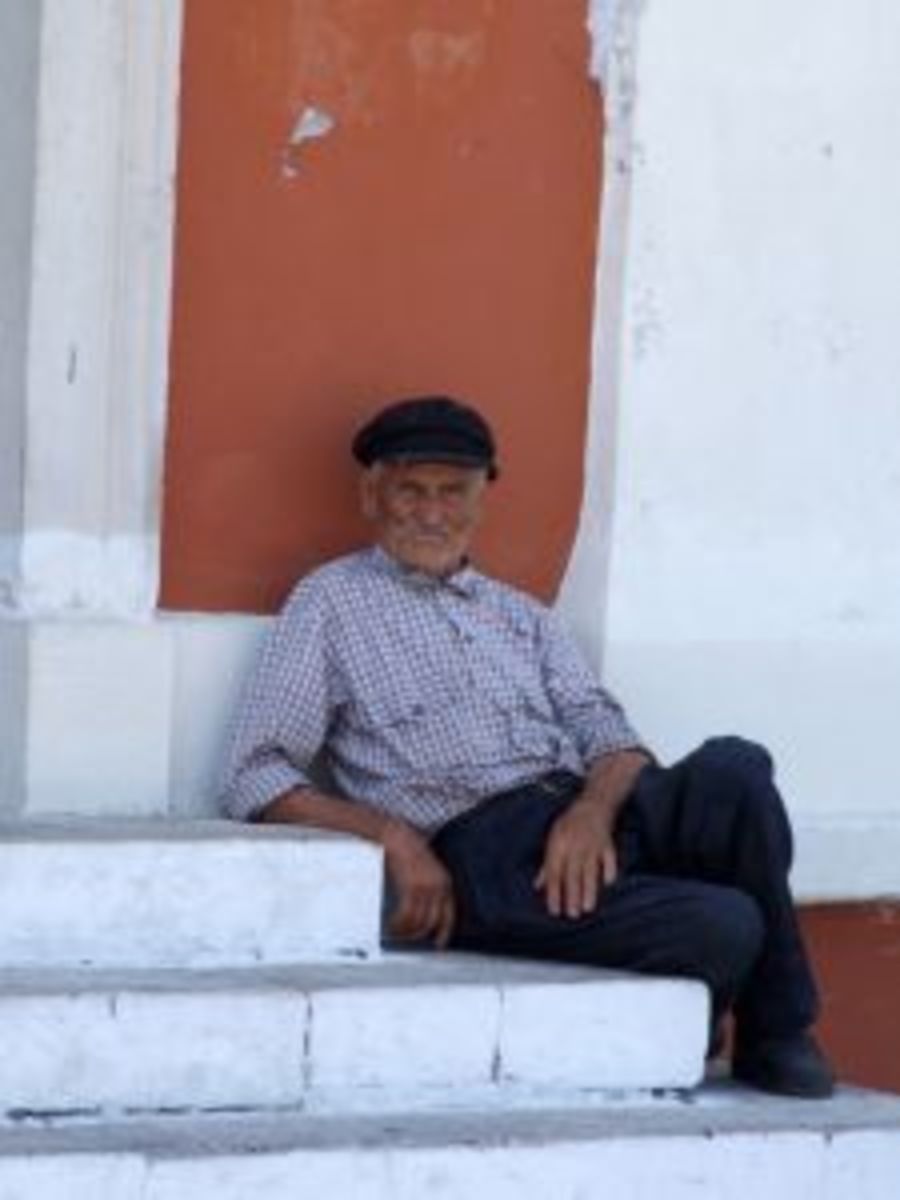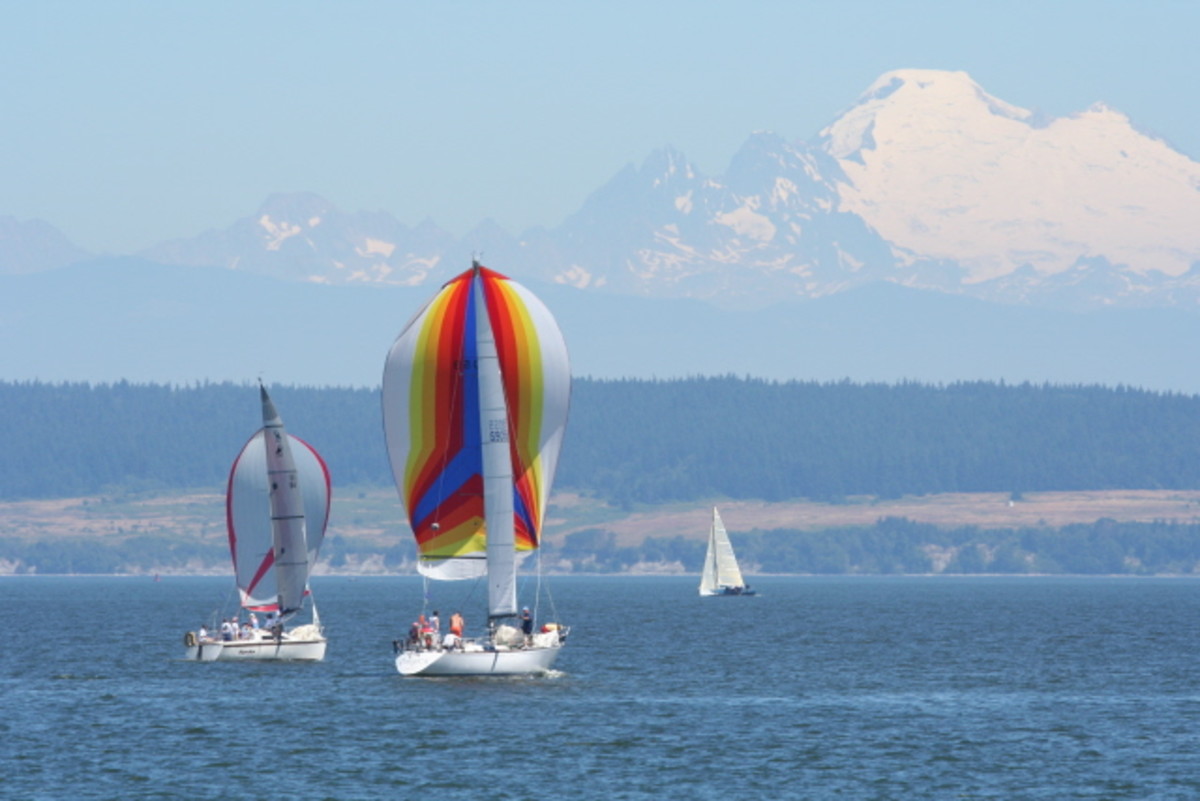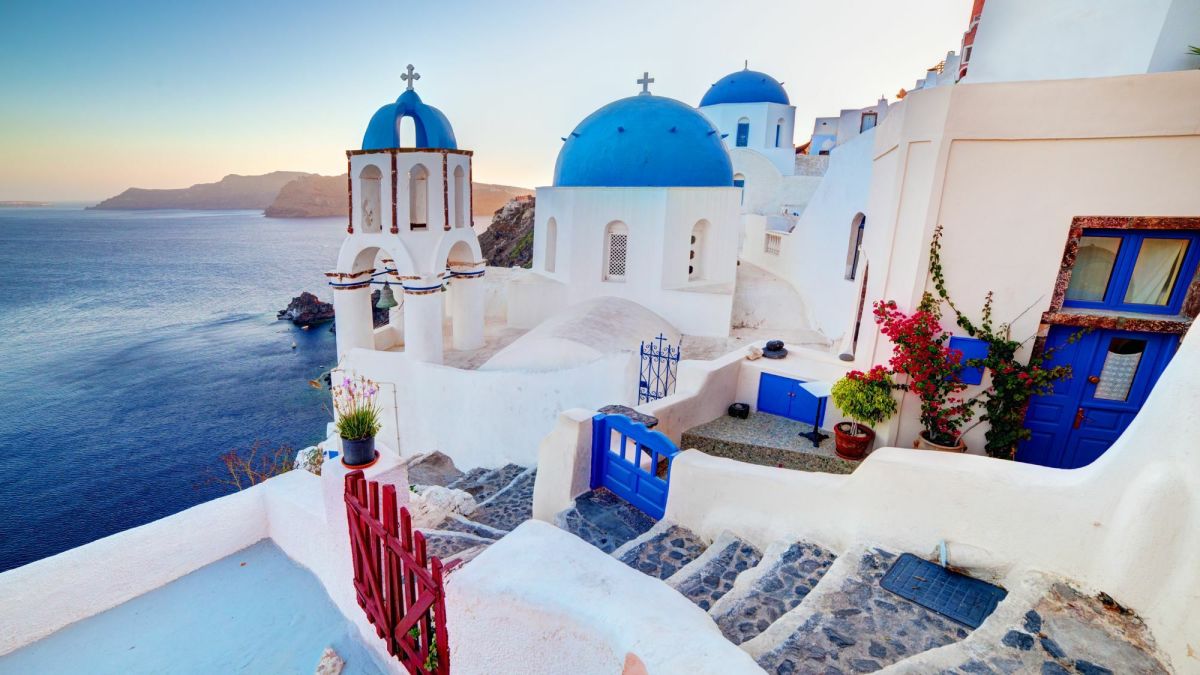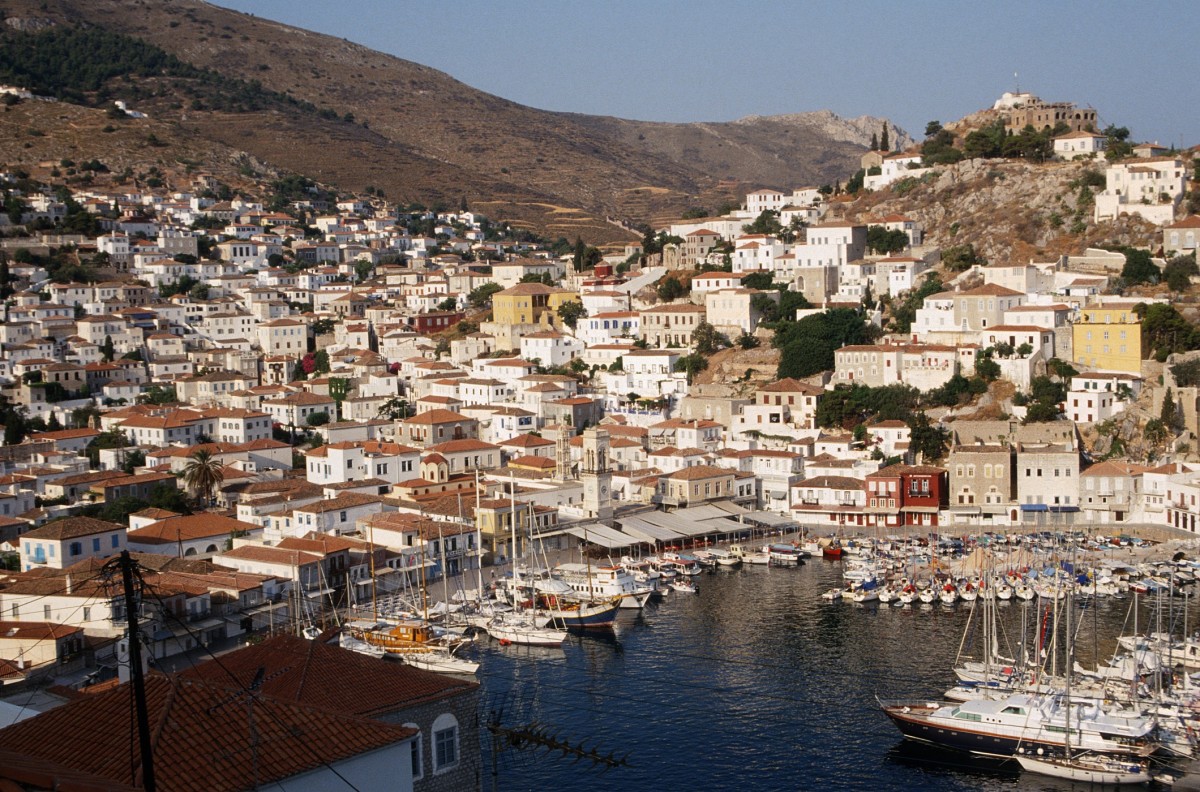SKIATHOS - Live your myth in Greek island
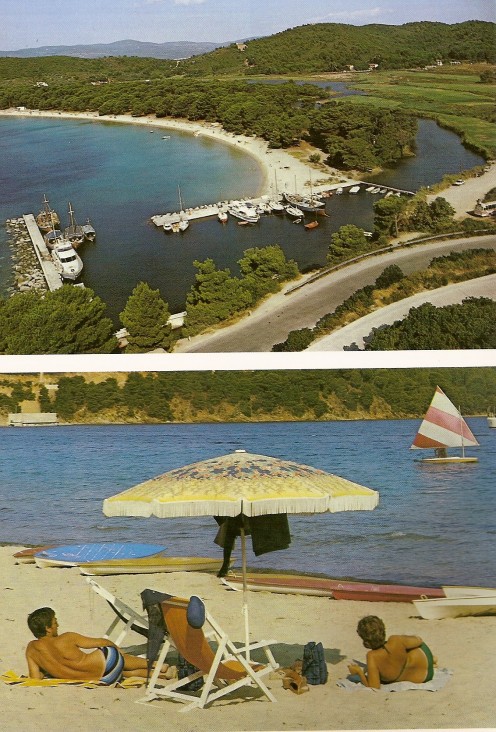
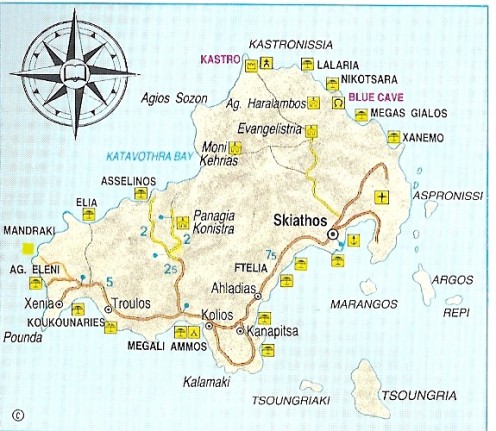
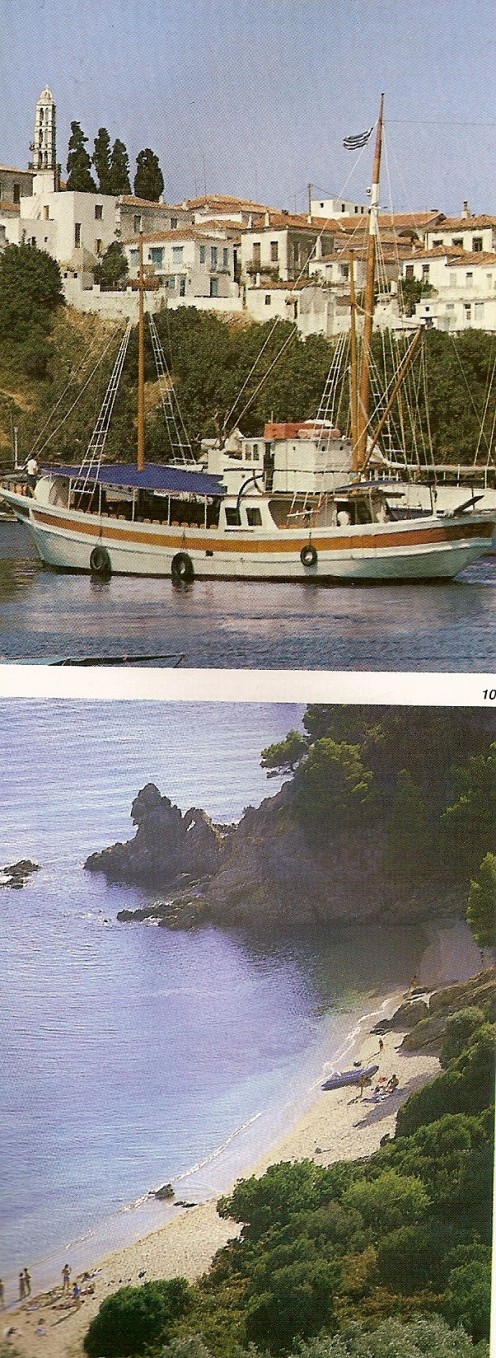
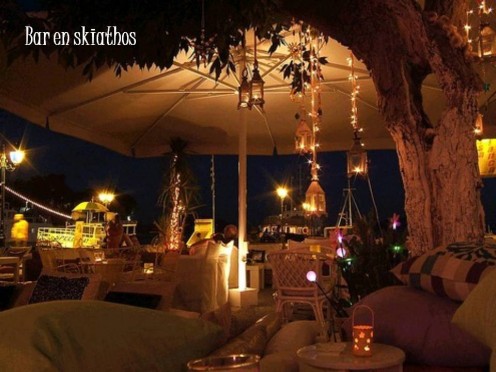
SKIATHOS
GEOGRAPHY. Situated opposite Pelion and north of Euboia, Skiathos is 43 nautical miles from Volos, 44 from Aghios Konstantinos and 57 from Kymi. Surface area 48 sq. km., length of coastline 44 km. and population 4,127. There is a daily car ferry service from Aghios Konstantinos and a twice weekly link with Kymi during the summer, once during the winter. In the summer time frequent connections with Skopelos and Halonnisos and once a week with Mytilene, Limnos, Aghiios Efstratios, Samothrace, Kavala and Alexxandroupolis.
Excursion craft also sail to Skopelos and Halonnisos, as well as Pefki and Oreoi in Euboia, while there is a link with Trikeri all year round. There is a daily flight to and from Athens. The island, with its many lovely beaches, unusual and diverse landscape, is one of the most cosmopolitan in Greece. Though tourists flock here in great numbers, it maintains its distinctive picturesqueness and there are still places suitable for quiet, restful holidays.
HISTORY. The island's strategic position was decisive for its fate in antiquity. During Xerxes' campaign three Greek triremes were anchored here, ready to confront the Persian fleet. Skiathos was colonized by Ionians and later by Chalkidians; it became a member of the Athenian League (477 BC) and for a short period belonged to the Macedonians, later to the Romans and then reverted to the Athenians (199 - 221 AD). Under the Latins it became a possession of the Ghisi family (1207 -1454). In 1537 it was sacked by Barbarossa and was captured by the Turks in the following year. During the Revolution the ships of Skiathos played their part and the island was liberated in 1823. In 1829 the fortified Kastro was abandoned and its inhabitants settled in the present town, on the site of the ancient city. In 1851 the great Greek novelist Alexandros Papadiamantis, the "saint" of Greek letters, was born here in a house close to the harbor, now a museum in his memory. Another famous short-story writer, Alexandros Moraitidis, also hailed from Skiathos.
SIGHTS-MONUMENTS. The island's capital and main harbor, Skiathos, presents a gay and colourful picture, with its bright white houses with tiled roofs, narrow streets, flower filled courtyards and balconies, not to mention its churches. One of the most charming quarters is Bourtzi, where the Ghisi jamily built a mighty fortress in 1270. From here there is a magnificent view, as also from the church of St. Nicholas, to the east of Chora. The church of the Virgin Limnia is perched to the west. In addition to Papadiamantis' house, one can also visit the shipyards (tarsanades) where fishing boats (trechandiria) and caiques are made. Apart from the main town there are two small holiday resorts (Kanapista, Kouukounaries).
In the northern part of the island is the old fortified capital of Kastro, best reached by boat. The islanders settled there for greater security during Turkish times and quit it in 1829 when they established the present capital. During World War II Kastro provided a haven for the Allied Forces en route for Egypt, nowadays it is virtually in ruins. Of the original 30 churches only 3 have survived, including the old cathedral church of Christ (metropolis). Beneath the castle two precipitous rocks, the Kastronisia, stand sentinel.
Of the island's monasteries that of the Evangelistria nestles in the foothills of the highest peak, Karaflitzanaka (436 m. a.s.I.). The monastery was built in the 18th century and in its katholikon there is a wood-carved iconostasis and exceptional wall-paintings. Its library houses some important manuscripts. The monastery of St. Charalambos (north side of the island), to which Alexandros Moraitidis withdrew towards the end of his life, also dates from the 18th century. Nowadays it is desertted, as is the monastery of the Virgin of Kechria (northwest side) of which only the katholikon with its wood-carved iconostasis, old icons and traces of wall-paintings, has survived. On the west coast of the islands, above the lovely beach of Troulos, stands the monastery of the Virgin Kounistra, built in 1727, which attracts a host of pilgrims on account of its miraculous icon of the Virgin.
The island has any number of delightful coves and beaches, excellent for swimming and sea sports and carefree holidays. Particuularly good bathing at: Bourtzi, Plakes, KochyyIi, Megali Ammos (7 km. from Chora), Kanapittsa (6 km. from Chora). Beaches on both the west and east sides are: Xanemo, Megas Yalos, Elia, Aselinos, while the beaches at Troullos and Banana are preferred by nudists. One can get to the coast by bus, which departs from the harbour and goes as far as Koukounaras, or by caique, which regularly sail out of the harbor on trips to all the beaches and neighboring islets.
One may make an excursion by caique to Lalaria, one of the most beautiful coves in Greece, also known as Trypia Petra, due to the fantastic rock formations caused by wind erosion. Quite close is the Galazia Spilia (Blue Grotto) where the sun is mirrored in the calm waters, filling the cave with its reflections. Without doubt the most beautiful beach on Skiathos is Koukounaries, (12 km. west of Chora) renowned not only for its sea, but also its unique landscape where the waves lap at the edge of the pine forest. A boat is a definite advantage for getting to know the island. Refueling facilities in the harbor. Visitors may stay in hotels, pensions, furnished rooms or apartments.
I've been too many times to Skiathos and always feel like the first time... pure paradise - green/blue waters and the best clubs. Your next trip must include this paradise...


